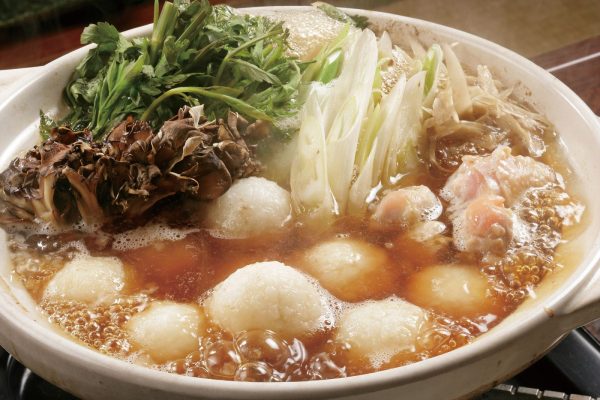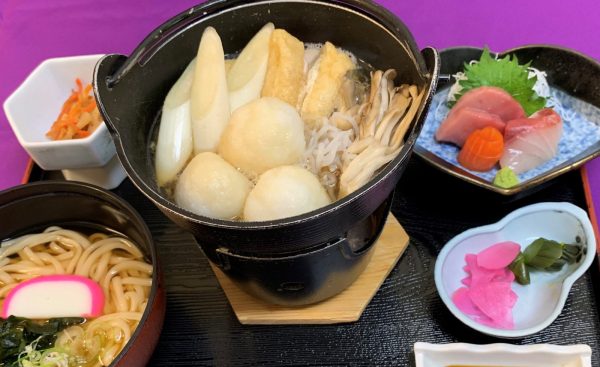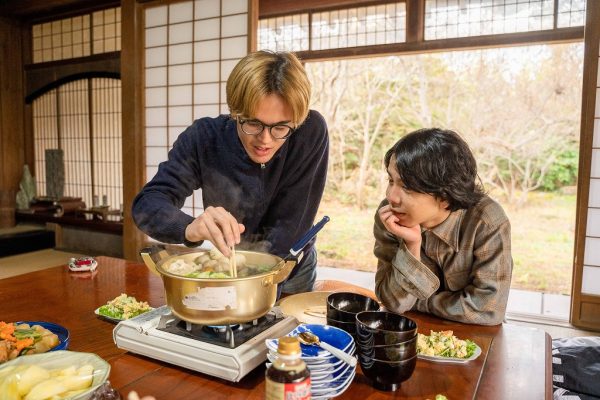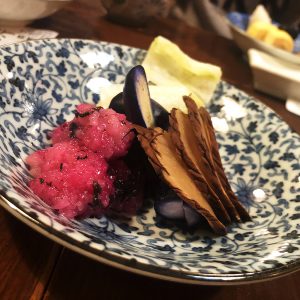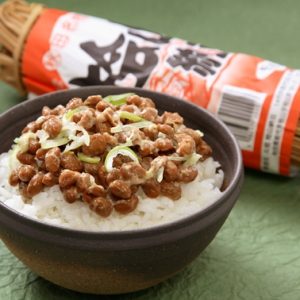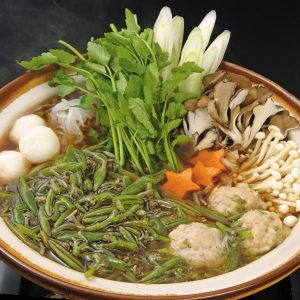Damako Hotpot
Not second to Akita’s famous Kiritanpo hotpot
This delicious hotpot dish is a unique specialty of Northern Akita and is usually enjoyed in winter by locals. The primary ingredients often used are rice, hinai jidori chicken, green onion, seri (Japanese parsley), local mushrooms and burdock root. The main ingredient, damako mochi (rice cakes shaped into balls), taste amazing once soaked in the broth which brings out the rich flavours of umami from the local free-range chicken, burdock root and a variety of local mushrooms. The addition of seri gives a refreshing herbal aroma to the dish. Most definitely a warm and heavenly treat after an exhilarating kanjiki trek or outdoor adventure in Northern Akita’s powder snow.
A simple meal made using the finest ingredients
Adding to its star status among the locals is the combined use of Akita’s specialty, fresh akita komachi (local rice) and Odate City’s hinai jidori chicken. What goes into this mildly sweet home-cooked dish may slightly vary by region and family, however the base ingredients remain the same. Damako-making was known to be a fun family activity in winter, and you can actually try it yourself by booking a damako-making experience with friendly locals during your visit here.
History & origin
The Nanshu region around Hachiro Lagoon is believed to be the birthplace of Damako nabe (hotpot). Originally, it was eaten as ‘tsukego’, which was made by adding delicacies of Hachiro Lagoon―grilled smelt, crucian carp, and whitebait (Japanese Icefish)―and flavouring it with miso. However, over the years, it is said that due to the drastic decrease in the number of fish, the locals seemed to have turned away from fish, and started using chicken bones and meat instead.
In Akita, otedama (traditional children’s’ toy) was referred to as ‘damako’. Being a rice dumpling and owing to its close resemblance to the otedama, the rice cakes came to be known by its present name―damako or damakko. There is also another theory that its present name is derived from the Japanese phrase ‘damatte taberu ko’ which means ‘child who eats in silence’―because it was said that the rice cake balls were so delicious that the children were silent as they were so absorbed in eating them.
What similarities does it share with Kiritanpo hotpot?
The rice cakes are shaped differently and in Kiritanpo hotpot, the tanpo (cylindrical rice cakes) are grilled and skewered. The damako mochi, on the other hand, are shaped into balls, not grilled and do not use skewers. The dashi soup base and other ingredients used are quite similar in both dishes. As for its origins, it is said to be traditionally linked to Akita City, Oga City, the Nanshu region and the northern coastal areas up to the Noshiro Yamamoto area in Akita prefecture.
Where to try?
Here are some recommended places in our area to enjoy Damako hotpot.
- Izakaya Sakedoko Berabo
- Damakko-ya
- Yamakyu
- Farmhouse restaurant (Nōka resutoran) Minami Shirakami no Sato
Did you know?Along with Satsuma Jidori and Nagoya Cochin, Hinai Jidori is one of the three most famous chicken breeds in Japan!








